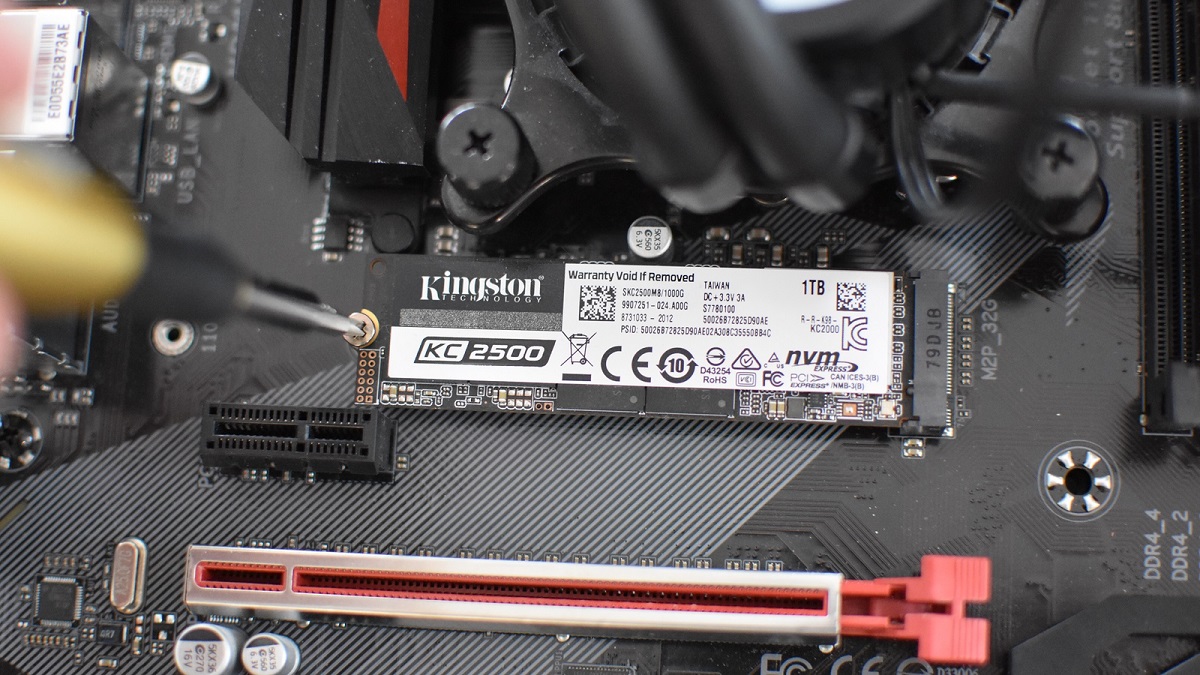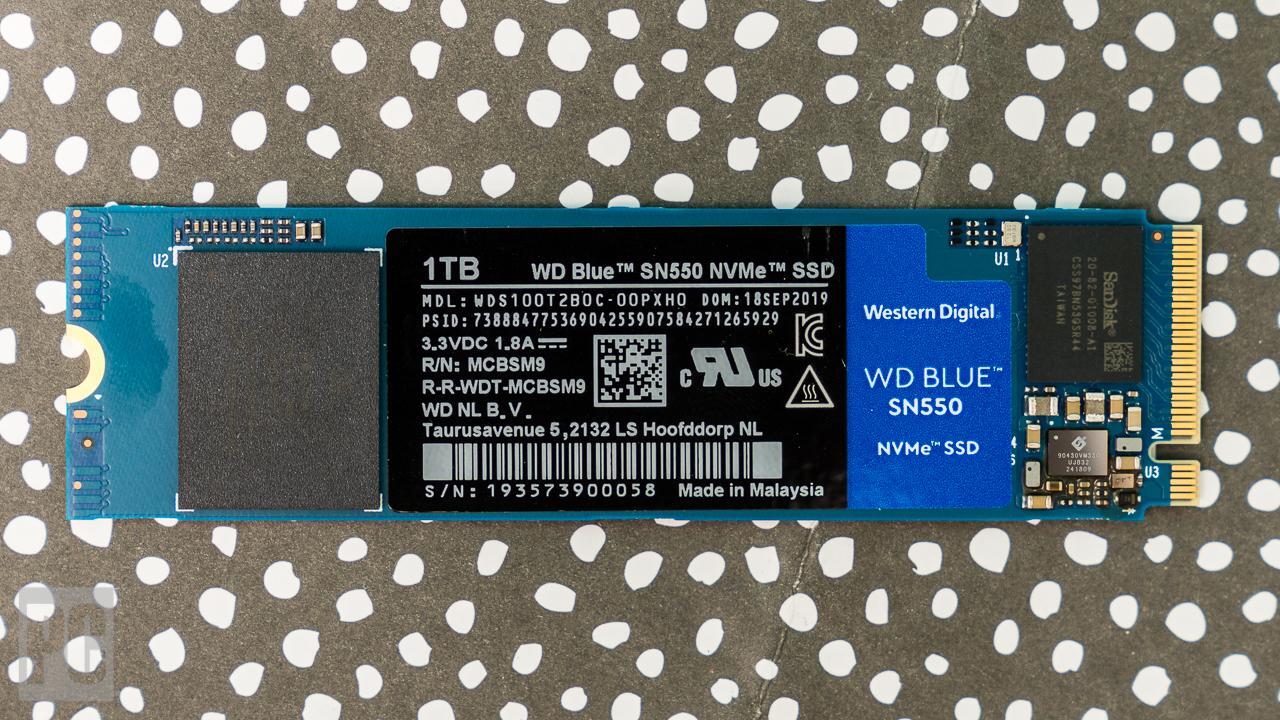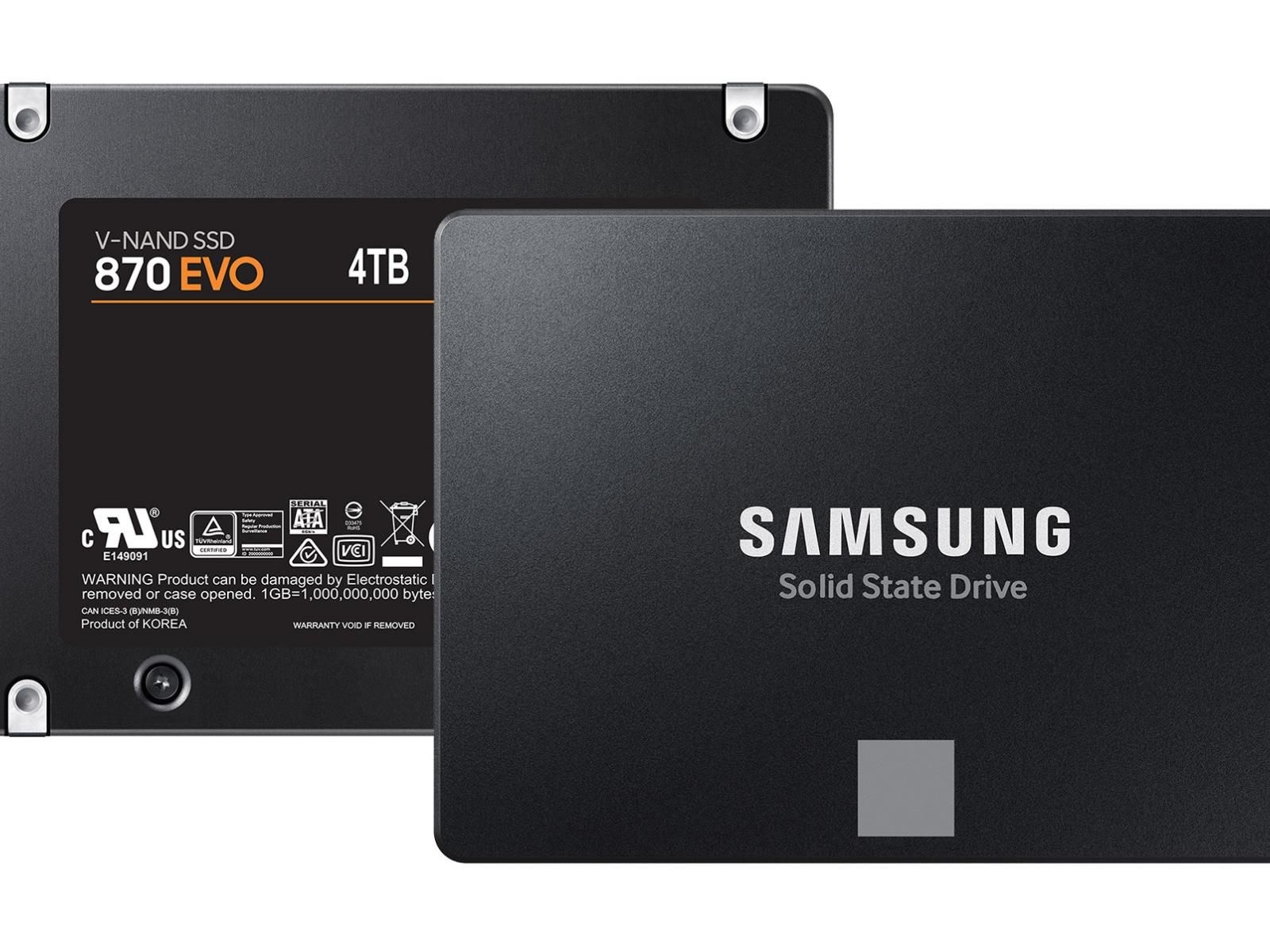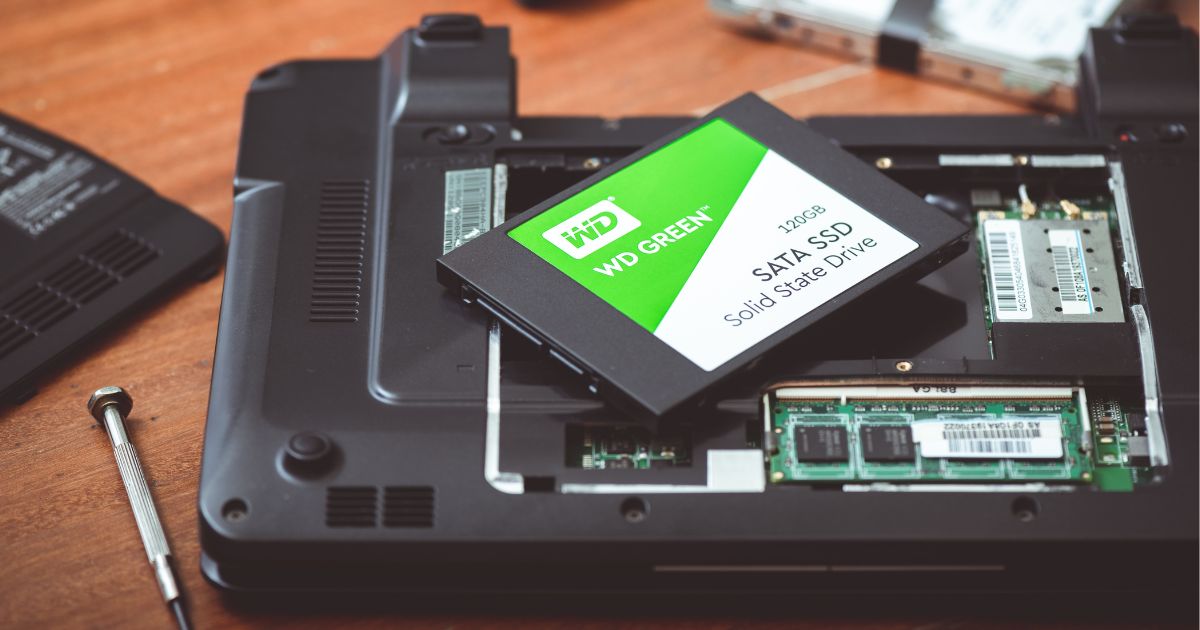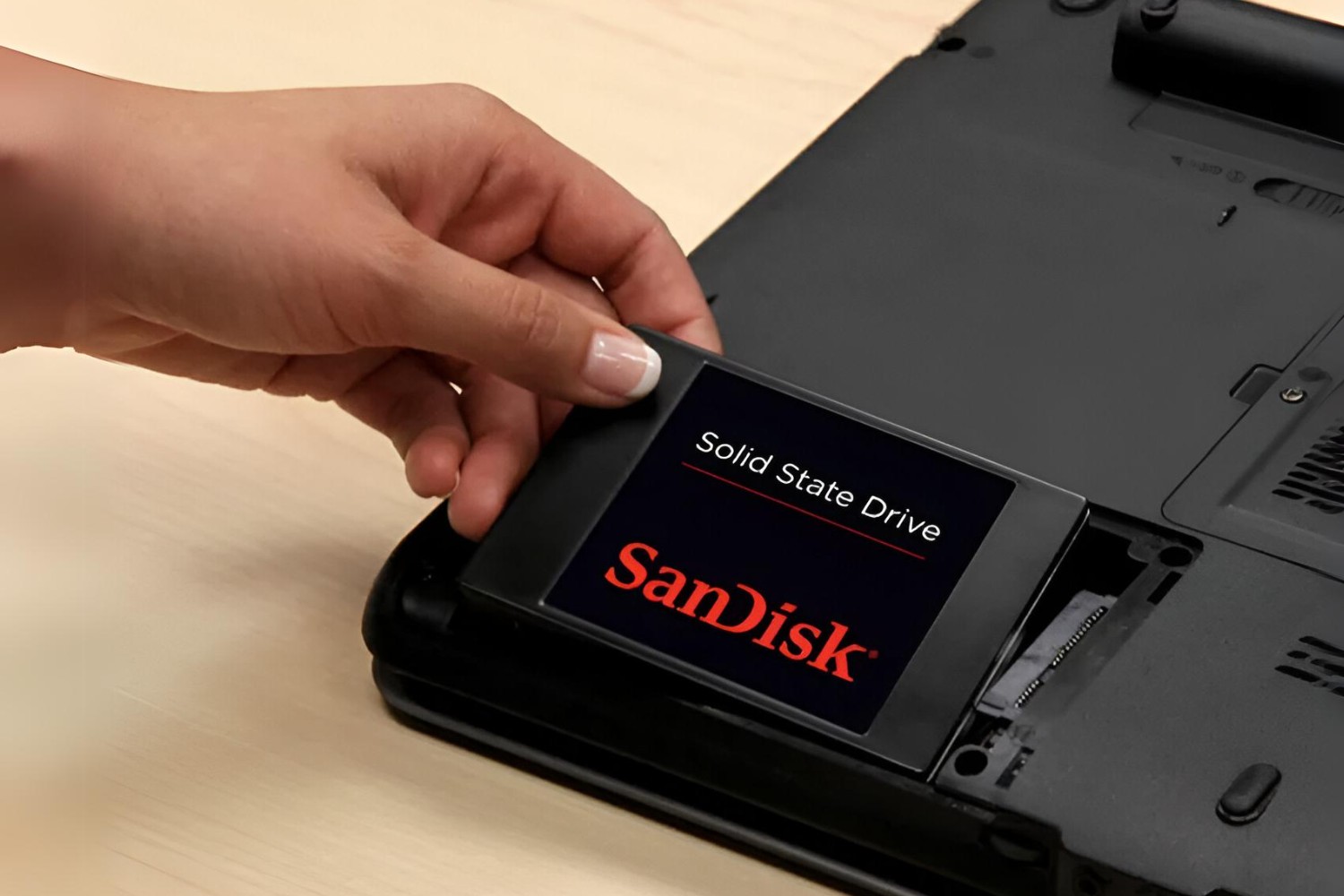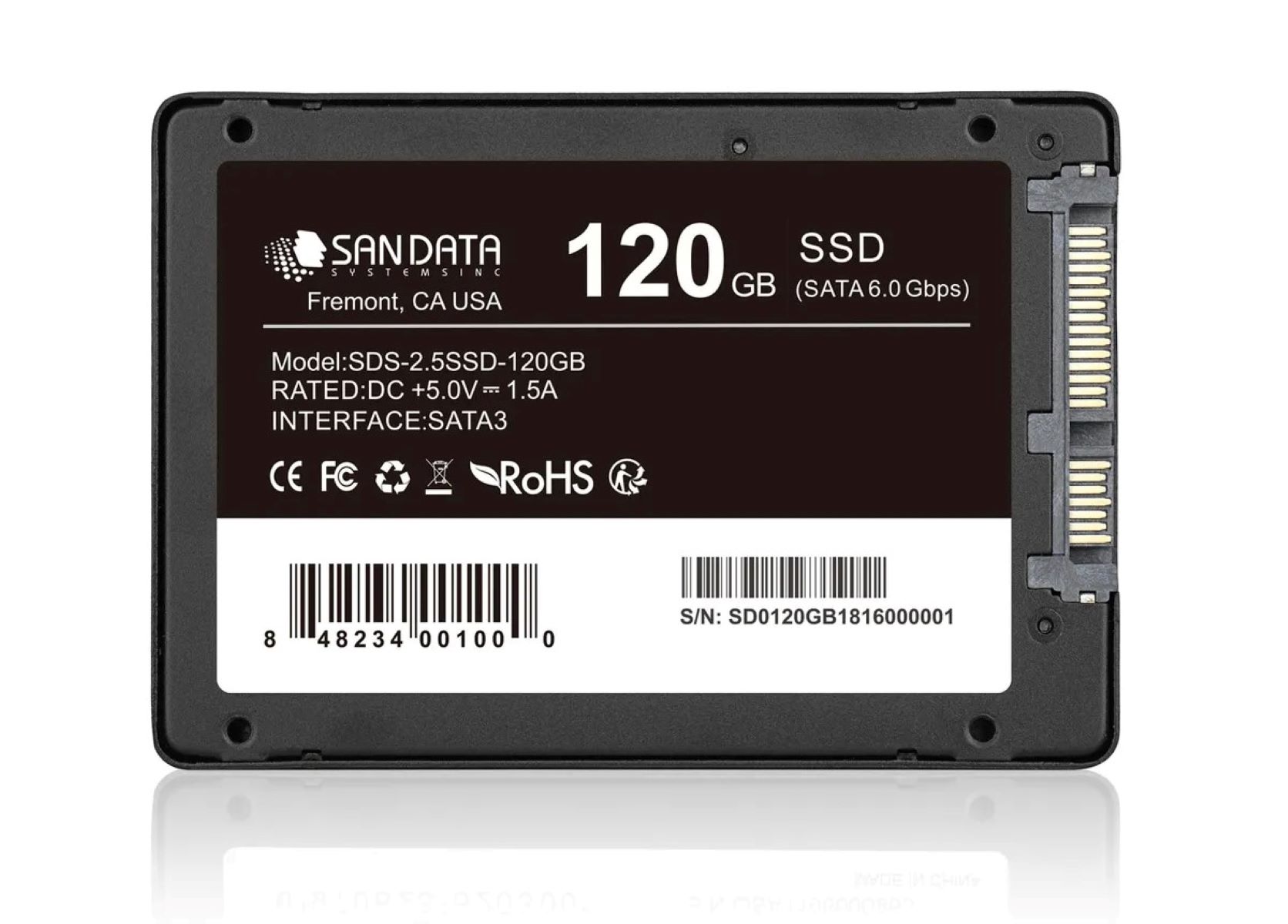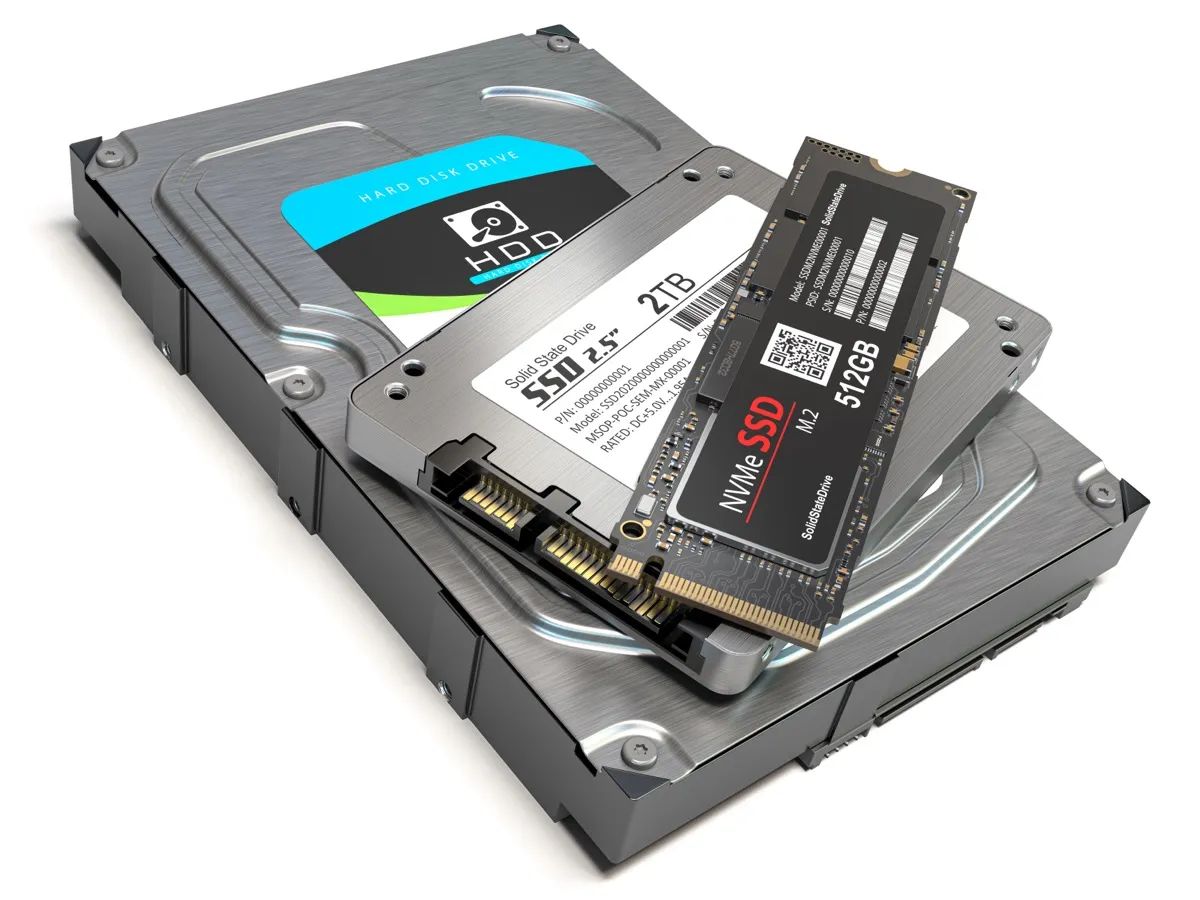Introduction
When it comes to computers, storage plays a crucial role in determining their overall performance and efficiency. While traditional hard disk drives (HDDs) have long been the go-to choice, solid-state drives (SSDs) have emerged as a game-changer in the world of computer storage. SSDs offer numerous advantages over HDDs, ranging from faster speeds and enhanced performance to increased durability and lower power consumption. Understanding what an SSD does and how it works can help us appreciate its significance in today’s computing world.
An SSD, or solid-state drive, is a storage device that uses flash memory to store data and retrieve it quickly. Unlike HDDs, which rely on spinning magnetic disks, SSDs have no moving parts. This fundamental difference gives SSDs a significant advantage in terms of performance and longevity.
The way an SSD works is fairly straightforward. It uses integrated circuits to store data in non-volatile memory cells. When you store or retrieve data on an SSD, the process is performed electronically, without any mechanical action. This results in faster data access, reduced latency, and improved overall system responsiveness.
In the following sections, we will delve deeper into the advantages and disadvantages of using an SSD in a computer, as well as provide tips on how to choose the right SSD for your specific needs. By the end of this article, you will have a comprehensive understanding of what an SSD does and how it can benefit your computer setup. So, let’s dive in and explore the world of SSDs!
What is an SSD?
An SSD, short for solid-state drive, is a type of storage device that has gained widespread popularity in recent years. It serves as a viable alternative to traditional hard disk drives (HDDs), offering several advantages in terms of performance, durability, and power efficiency.
Unlike HDDs, which use spinning disks to read and write data, an SSD utilizes flash memory technology. This means that an SSD stores data on interconnected memory chips that retain information even when power is not supplied to the device. The absence of moving parts in an SSD contributes to its exceptional speed, reliability, and silent operation.
An SSD consists of multiple NAND flash memory chips organized into a controller and memory modules. The controller manages data storage, retrieval, and communication between the SSD and the computer’s operating system. The memory modules store the actual data, often using multi-level cell (MLC) or triple-level cell (TLC) technology to maximize storage capacity.
SSDs come in various form factors, including 2.5-inch drives for laptops and desktops, M.2 drives for ultrabooks and gaming systems, and PCIe drives for high-performance applications. The capacity of an SSD can range from a few hundred gigabytes to multiple terabytes, catering to the diverse storage needs of users.
Not only do SSDs offer faster read and write speeds compared to HDDs, but they also provide consistent performance over time. HDDs can experience performance degradation as they age or when the disk is fragmented. In contrast, SSDs maintain their speed and responsiveness regardless of how long they have been in use.
In addition to their speed and reliability, SSDs have a lower failure rate compared to HDDs. Since SSDs don’t have moving parts that are prone to mechanical failure, they can withstand shocks, vibrations, and extreme temperatures more effectively. This makes them ideal for portable devices and environments where reliability is crucial.
In the next section, we will delve into the inner workings of an SSD and explore how it functions to provide faster and more efficient storage solutions. So, let’s continue our journey into the world of SSD technology!
How does an SSD work?
Understanding how an SSD works can help shed light on its superior performance and efficiency compared to traditional hard disk drives (HDDs). While HDDs rely on spinning disks and read/write heads to access data, SSDs employ a different technology altogether.
At the heart of an SSD is its memory cells, which are made up of floating-gate transistors. Each memory cell can store multiple bits of data, typically using methods like single-level cell (SLC), multi-level cell (MLC), or triple-level cell (TLC) technology.
When the computer instructs the SSD to retrieve or store data, the controller chip takes charge. The controller chip serves as the brain of the SSD, coordinating data flow and managing tasks such as wear leveling, error correction, and garbage collection.
When data needs to be written to the SSD, the controller instructs the appropriate memory cells to store the data. It works by applying electric voltage to the memory cells, which alters the state of the floating-gate transistors. This change in state represents the stored data.
Similarly, when data needs to be read from the SSD, the controller retrieves the information from the memory cells by sensing the electrical charges within them. The controller then converts the electrical charges into the desired data and transfers it to the computer’s operating system.
One crucial aspect of SSD performance is the speed at which data can be accessed. Unlike HDDs, where the read/write heads physically move to the specific location on the spinning disk, SSDs utilize electronic pathways to access data. This eliminates the physical limitations associated with moving parts, resulting in significantly faster data transfer speeds and reduced latency.
To optimize performance and prolong the lifespan of an SSD, wear leveling is employed. Wear leveling ensures that data is evenly distributed across the memory cells, preventing certain cells from being overwritten more frequently than others. This helps to enhance the longevity and durability of the SSD.
Overall, an SSD’s operation can be summarized as a seamless coordination between the controller chip, memory cells, and the computer’s operating system. This synchronization allows for lightning-fast data access, improved system responsiveness, and enhanced overall performance.
In the next section, we will explore the advantages of using an SSD in a computer system, highlighting the benefits that make it a compelling choice for both casual and professional users. So, let’s continue our journey into the world of SSD technology!
Advantages of using an SSD
Using a solid-state drive (SSD) in your computer can bring a multitude of benefits that significantly improve your overall computing experience. From faster speeds to increased durability, here are some advantages of using an SSD:
- 1. Faster Speeds: One of the biggest advantages of an SSD is its lightning-fast speeds. SSDs offer significantly faster read and write speeds compared to traditional hard disk drives (HDDs), resulting in quicker boot times, faster application launches, and seamless multitasking. With an SSD, you can experience a noticeable boost in overall system performance.
- 2. Enhanced Performance: Due to their fast data access speeds, SSDs can handle data-intensive tasks with ease. Whether you’re editing photos and videos, running complex software, or playing demanding games, an SSD can provide a noticeable improvement in performance, reducing load times and minimizing lag.
- 3. Increased Durability: SSDs are more durable than HDDs because they don’t have any moving parts that are prone to mechanical failure. This makes SSDs more resistant to shocks, vibrations, and accidental drops. With an SSD, you can enjoy peace of mind knowing that your data is stored on a reliable and robust storage device.
- 4. Lower Power Consumption: SSDs consume significantly less power compared to HDDs. With lower power consumption, your laptop or desktop computer can operate more efficiently, resulting in longer battery life for laptops and reduced electricity costs for desktop systems. SSDs are an excellent choice for those who prioritize energy efficiency.
- 5. Noise-free Operation: Since SSDs have no moving parts, they operate silently. Unlike HDDs, which can produce noticeable noise due to the spinning disks and read/write heads, an SSD provides a noise-free computing experience. This is particularly beneficial for those who require a quiet working environment or use their computer for media consumption and entertainment.
- 6. Improved Boot Time: With an SSD, your computer’s boot time is significantly reduced. SSDs have faster startup times, allowing you to get to work or play without delay. Whether you’re turning on your laptop or restarting your desktop, an SSD can make the boot process nearly instantaneous, saving you valuable time.
- 7. Greater Reliability: SSDs are known for their exceptional reliability. With no moving parts, there is a lower risk of mechanical failure or disk fragmentation that can impact performance. This increased reliability translates to fewer data errors and enhanced data integrity, ensuring that your important files and documents are safe and secure.
With these advantages, it’s no surprise that SSDs have become the preferred choice for many computer users seeking top-notch performance and reliability. In the next section, we will explore the potential disadvantages of using an SSD to provide a balanced perspective on this storage technology.
Faster Speeds
One of the most significant advantages of using a solid-state drive (SSD) in your computer is the dramatic increase in speed compared to traditional hard disk drives (HDDs).
SSDs excel in terms of both read and write speeds, allowing for lightning-fast data access. When you boot up your computer, an SSD can significantly reduce the startup time, getting you up and running in seconds. Similarly, launching applications and opening files becomes nearly instantaneous, saving you valuable time and increasing productivity.
The key to the impressive speed of SSDs lies in their architecture. Unlike HDDs which rely on mechanical components and spinning disks to access data, SSDs utilize flash memory technology. This enables data to be retrieved and written electronically, eliminating the need for physical read/write heads and rotational latency.
Additionally, SSDs excel in random access times, which refers to the time it takes to access and retrieve data from various locations on the drive. HDDs typically suffer from increased access times, especially when dealing with fragmented data. On the other hand, SSDs offer consistent and near-instantaneous access times, ensuring smooth and efficient operation even with scattered data.
The faster speeds provided by SSDs have a significant impact on various computing tasks. Whether you’re working on complex software applications, running intensive simulations, or editing high-resolution multimedia files, an SSD can handle these demanding tasks with ease, reducing load times and improving overall system responsiveness.
Furthermore, gamers can benefit greatly from an SSD’s faster read and write speeds. Games can load faster, reducing waiting times between levels or scenes. SSDs can also help eliminate stuttering and lag, providing a smoother and more enjoyable gaming experience.
Overall, the faster speeds offered by SSDs revolutionize the way we interact with our computers. They make everyday computing tasks quicker and more efficient, enhancing productivity and improving the overall user experience.
In the next section, we will explore another advantage of using an SSD – enhanced performance – and delve into how it can boost your computer’s capabilities. Let’s continue our journey into the world of solid-state drives!
Enhanced Performance
Another significant advantage of using a solid-state drive (SSD) in your computer is the enhanced overall performance it provides. SSDs offer improvements in several key areas, resulting in a smoother and more efficient computing experience.
One of the main factors contributing to enhanced performance is the faster data transfer speeds of SSDs. With read and write speeds significantly higher than traditional hard disk drives (HDDs), SSDs can handle data-intensive tasks with ease.
When launching software or applications, SSDs can retrieve the necessary files and data much more quickly, reducing load times and allowing you to start working or gaming without delay. This increased speed is particularly noticeable with large applications, such as video editing software or graphic design tools, where the improved performance can make a substantial difference in productivity.
In addition to faster data transfer speeds, SSDs also excel in handling multiple tasks simultaneously. HDDs often struggle with multitasking, leading to slower performance and increased response time. With an SSD, however, you can seamlessly switch between multiple applications and perform resource-intensive tasks without experiencing a drop in performance.
The improved performance of SSDs extends to various aspects of computer usage. For example, file transfer speeds are significantly faster with SSDs, allowing you to move large files or copy data between drives in a fraction of the time it would take with an HDD.
Furthermore, SSDs contribute to faster boot times. With an SSD as your primary storage device, your computer can start up and reach the operating system faster, ensuring you can get to work or enjoy your favorite activities in no time. SSDs are especially beneficial in scenarios where you need to quickly access your computer and start using it, such as during presentations or time-sensitive work.
Overall, the enhanced performance offered by SSDs can transform your entire computing experience. Whether you’re working on resource-intensive tasks, playing demanding games, or simply navigating through your operating system, an SSD ensures smooth, responsive, and efficient performance.
In the next section, we will explore another advantage of SSDs: increased durability. We will delve into how SSDs handle physical stress and provide reliable data storage, giving you peace of mind about the safety of your valuable digital assets. Let’s continue our journey into the world of solid-state drives!
Increased Durability
When it comes to durability, solid-state drives (SSDs) have a clear advantage over traditional hard disk drives (HDDs). The absence of moving parts in an SSD makes it more robust and resilient to physical stress, resulting in increased durability and data integrity.
HDDs rely on spinning disks and mechanical read/write heads, both of which are susceptible to failure due to physical shocks, vibration, and accidental drops. The delicate nature of these components makes HDDs more vulnerable to data loss and damage.
In contrast, SSDs are built with solid-state memory cells and do not have any moving parts. This makes them more resistant to physical impact and less prone to mechanical failure. SSDs can withstand shocks and vibrations better than HDDs, making them ideal for laptops and portable devices that are frequently transported.
The lack of moving parts also has a positive impact on the overall reliability and longevity of an SSD. HDDs are susceptible to mechanical wear and tear, as the moving components gradually degrade over time. This can result in issues such as bad sectors, disk failure, and the need for regular disk maintenance.
On the other hand, SSDs are not affected by mechanical wear and tear. With their flash memory architecture, they can withstand a higher number of read and write cycles, ensuring long-term reliability and data integrity. This makes SSDs a more reliable choice for critical data storage, such as important documents, photos, and videos.
Additionally, the lack of moving parts in SSDs means they operate silently. HDDs can produce noticeable noise due to the spinning disks and read/write heads. The absence of these mechanical components in SSDs results in a noise-free computing experience, which is particularly beneficial for those who require a quiet working environment or engage in media consumption activities.
Overall, the increased durability of SSDs provides a greater level of security and peace of mind. By choosing an SSD for your computer, you can rely on a storage solution that can handle physical stress, resist mechanical failure, and provide robust data protection in various environments.
In the next section, we will discuss another advantage of SSDs: lower power consumption. We will explore how SSDs contribute to energy efficiency and longer battery life in laptops, as well as reduced electricity costs for desktop systems. Let’s continue our exploration of solid-state drives!
Lower Power Consumption
One of the notable advantages of using a solid-state drive (SSD) in your computer is its lower power consumption compared to traditional hard disk drives (HDDs). SSDs are designed to operate efficiently, minimizing energy usage and providing several benefits in terms of power efficiency.
HDDs require a considerable amount of power to spin the disks and move the read/write heads. This continuous power consumption can have a significant impact on a laptop’s battery life or contribute to higher electricity costs for desktop systems.
On the other hand, SSDs do not have any moving parts, allowing them to operate more efficiently. They consume considerably less power, resulting in extended battery life for laptops and reduced electricity consumption for desktops. This energy efficiency is particularly beneficial for users who frequently rely on their laptops for mobile work or are conscious of their environmental impact.
The lower power consumption of SSDs is especially advantageous when it comes to idle or low-demand situations. When your computer is not actively accessing or transferring data, an SSD will consume minimal power, further conserving energy and reducing overall power usage. This results in cooler operation and less heat generated by the storage device, contributing to a more stable and reliable computer system.
Furthermore, the lower power consumption of SSDs translates to less heat generated within your computer. Since SSDs do not have moving parts that generate friction and heat, they run cooler than HDDs. This can help to improve the overall performance of your computer, as excessive heat can negatively affect component reliability and stability.
SSDs also have faster data access times, which means that the time spent accessing and transferring data is reduced, resulting in shorter active periods and thus lower power consumption. This is especially beneficial for laptops, where power conservation is crucial to extend battery life and enable users to work or play for longer periods without the need for frequent recharging.
In summary, the lower power consumption of SSDs provides several advantages, including extended battery life for laptops, reduced electricity costs for desktops, cooler operation, and greater energy efficiency. By choosing an SSD, you not only experience the benefits of faster storage but also contribute to a greener and more sustainable computing environment.
In the next section, we will discuss another advantage of SSDs: noise-free operation. We will explore how SSDs eliminate the operational noise associated with spinning disks, providing a quieter computing experience. Let’s continue our exploration of solid-state drives!
Noise-free Operation
One of the notable advantages of using a solid-state drive (SSD) in your computer is the complete absence of noise during operation. Unlike traditional hard disk drives (HDDs) that rely on spinning disks and moving read/write heads, SSDs have no mechanical components, resulting in a completely silent computing experience.
HDDs can produce noticeable noise during their operation. The spinning disks and read/write heads moving back and forth can create audible vibrations and whirring sounds. These noises can be distracting, especially in quiet environments or when undertaking tasks that require concentration.
With an SSD, you can enjoy a noise-free computing experience. Since SSDs do not have any moving parts, there are no vibrations or mechanical noise generated during operation. This makes SSDs particularly beneficial for those who require a quiet working environment, such as writers, designers, or students.
The absence of noise is also advantageous for media consumption and entertainment purposes. Whether you’re watching movies, listening to music, or playing games, the lack of operational noise from an SSD ensures an immersive and undisturbed audio experience.
In addition to providing a quiet and peaceful computing environment, the absence of mechanical noise in SSDs can have a positive impact on the overall reliability of your system. Moving parts in HDDs, while designed to withstand normal wear and tear, can still be susceptible to failure or degradation over time. With an SSD, you eliminate the risk of mechanical failure due to moving parts, resulting in improved system reliability and data integrity.
The noise-free operation of SSDs is particularly relevant for laptops and portable devices. Since laptops are commonly used in various environments, including libraries, classrooms, and coffee shops, having a noise-free storage solution enhances the user experience and allows for undisturbed work or entertainment.
Overall, the quiet and noise-free operation of SSDs provides a more pleasant and focused computing experience. Whether you need a serene work environment, enjoy media consumption, or utilize your laptop in public spaces, an SSD ensures that your computing activities are free from the distractions associated with mechanical noise.
In the next section, we will discuss another advantage of SSDs: improved boot times. We will explore how SSDs significantly shorten the time it takes for your computer to start up and become ready for use. Let’s continue our exploration of solid-state drives!
Improved Boot Time
One of the noticeable advantages of using a solid-state drive (SSD) in your computer is the significantly improved boot time. When it comes to starting up your system and getting ready to use your computer, an SSD can make a noticeable difference compared to traditional hard disk drives (HDDs).
Typically, HDDs require a significant amount of time to spin up the disks and position the read/write heads in the correct location to access the operating system and other startup files. This can result in longer boot times, leaving you waiting for your computer to become operational.
With an SSD, the boot time is dramatically reduced. Since SSDs do not have any moving parts, they do not require time to spin up disks or wait for read/write heads to position themselves correctly. The operating system and startup files can be accessed almost instantaneously, allowing your computer to start up much faster.
When you power on your computer with an SSD, you can expect to see the operating system loading within seconds. This means you can quickly get to work, access your files, or start using your applications without any significant waiting time. Improved boot time is particularly beneficial if you frequently need to restart your computer or if you’re in a time-sensitive situation.
In addition to shorter boot times, SSDs also contribute to faster wake-from-sleep or standby times. When your computer enters sleep mode or standby mode, an SSD can resume the operating system and return to normal functionality much quicker than an HDD. This allows you to get back to your work or activity without noticeable delay or interruption.
The improved boot time provided by SSDs transforms the overall user experience by reducing waiting times and increasing productivity. It allows you to focus on your tasks at hand rather than being frustrated by lengthy system startup processes.
It’s worth noting that while SSDs excel in boot times, the overall performance of your computer will also depend on other factors such as the processor, amount of RAM, and software optimization. However, incorporating an SSD into your setup can be a significant step in optimizing your system’s performance.
In the next section, we will discuss another advantage of SSDs: greater reliability. We will explore how SSDs offer more robust data storage and better resistance to physical stress, ensuring the safety and integrity of your valuable digital assets. Let’s continue our exploration of solid-state drives!
Greater Reliability
When it comes to data storage, reliability is of utmost importance. Solid-state drives (SSDs) offer a higher level of reliability compared to traditional hard disk drives (HDDs), making them an ideal choice for storing valuable data and critical files.
One of the main reasons SSDs are more reliable is that they lack moving parts. HDDs rely on spinning disks and moving read/write heads, both of which are susceptible to mechanical failure. The continuous motion of these mechanical components increases the risk of damage and data loss over time.
In contrast, SSDs use non-volatile memory cells to store and retrieve data electronically. Without any moving parts, the risk of mechanical failure is virtually eliminated. This significantly enhances the reliability of SSDs, ensuring that your data remains safe and accessible.
Another factor contributing to the greater reliability of SSDs is their resistance to physical stress. The absence of mechanical components makes SSDs more resilient to shocks, vibrations, and accidental drops. This is particularly beneficial for portable devices, such as laptops, where the risk of physical damage is higher. With an SSD, you can have confidence that your data is protected even when using your computer on the go.
Additionally, SSDs have a lower risk of disk fragmentation compared to HDDs. Fragmentation occurs when files are scattered across different areas of a disk, leading to slower access times and reduced performance. While HDDs are prone to fragmentation due to their physical limitations, SSDs do not suffer from this issue. The lack of read/write head movement and the near-instantaneous data access of SSDs ensure consistent performance over time.
SSDs also benefit from advanced error correction and wear leveling technologies. Error correction algorithms help to detect and correct data errors before they become significant issues, ensuring data integrity. Wear leveling algorithms evenly distribute write operations across the memory cells, preventing certain cells from wearing out faster than others. This extends the lifespan of the SSD and maintains optimal performance throughout its usage.
Combined, these features contribute to the greater reliability of SSDs, providing peace of mind and the assurance that your data is stored securely. Whether you’re using an SSD for personal or professional purposes, you can rely on its robustness and durability to protect your valuable digital assets.
In the next section, we will explore the potential disadvantages of using an SSD, balancing the discussion to provide a comprehensive view of this storage technology. Let’s continue our exploration of solid-state drives!
Disadvantages of using an SSD
While solid-state drives (SSDs) offer numerous advantages over traditional hard disk drives (HDDs), it’s important to consider their potential disadvantages before making a decision.
1. Higher Cost: One of the significant drawbacks of SSDs is their higher cost compared to HDDs. SSDs are generally more expensive per gigabyte of storage capacity. This can be a limiting factor, especially when large amounts of storage are required.
2. Storage Capacity Limitations: Although SSDs are available in a wide range of capacities, they typically offer lower storage capacities compared to HDDs. While this may not be a concern for users with modest storage needs, those requiring extensive storage capacity for large multimedia or data-intensive applications may find HDDs more suitable.
3. Limited Lifespan: SSDs have a limited lifespan compared to HDDs. Each memory cell in an SSD can handle a finite number of write cycles before it begins to degrade. While modern SSDs have improved longevity, it’s worth considering the estimated lifespan and factoring in the potential need for replacement in the long run.
4. Vulnerability to Power Loss: SSDs can be more susceptible to data loss during sudden power outages or system crashes. While the built-in power-loss protection features in some SSDs mitigate this risk, it’s essential to ensure proper backup and data recovery measures are in place.
5. Potential for Chip Failures: SSDs depend on integrated circuits (ICs) to function properly. In rare cases, individual chips or NAND gates within the SSD can fail, resulting in data loss or reduced performance. However, it’s worth noting that SSDs are generally reliable, and the likelihood of chip failures is low.
Despite these disadvantages, the overall benefits of SSDs often outweigh the drawbacks for many users. SSDs provide faster speeds, enhanced performance, increased durability, lower power consumption, noise-free operation, and greater reliability. The decision to use an SSD ultimately depends on individual needs, priorities, and budget constraints.
In the next section, we will provide some tips on how to choose the right SSD for your specific needs, helping you navigate the available options and make an informed decision. Let’s continue to explore solid-state drives!
Higher Cost
One of the primary disadvantages of using a solid-state drive (SSD) is its higher cost compared to traditional hard disk drives (HDDs). SSDs are generally more expensive per gigabyte of storage capacity, which can be a significant consideration when considering storage options.
The higher cost of SSDs is mainly due to the advanced technology and manufacturing processes required to produce them. SSDs utilize NAND flash memory, which is a more expensive storage medium than the magnetic disks used in HDDs. Additionally, the increasing demand for SSDs has driven prices down over time, but they still remain relatively more expensive than HDDs.
The cost difference between SSDs and HDDs can vary based on the specific models and storage capacities being compared. In general, SSDs tend to be more expensive for larger capacities, making them less feasible for users requiring extensive storage space, such as professionals working with large multimedia files or data-intensive applications.
It’s worth noting, however, that the cost gap between SSDs and HDDs has been narrowing over the years as SSD technology continues to evolve and become more accessible. As prices continue to decrease, the affordability of SSDs is improving, making them a more viable option for a wider range of users.
When deciding between an SSD and an HDD, it’s essential to consider your specific storage needs and budget. If you require large amounts of storage at a more budget-friendly price point, an HDD might be the more suitable choice. On the other hand, if speed, performance, and durability are priorities, investing in an SSD can provide significant benefits despite the higher cost.
Furthermore, it’s important to consider the overall value of an SSD. While the upfront cost may be higher, the improved performance, faster speeds, and energy efficiency offered by SSDs can lead to increased productivity and a better user experience in the long run. Additionally, SSDs tend to require less maintenance and have a longer lifespan compared to HDDs, potentially offsetting some of the initial cost considerations.
In summary, the higher cost of SSDs compared to HDDs is a notable disadvantage, particularly when looking at larger storage capacities. However, the cost difference is decreasing, and the benefits of faster speeds, enhanced performance, increased durability, lower power consumption, and improved reliability may outweigh the price difference for many users.
In the next section, we will explore another potential disadvantage of SSDs: storage capacity limitations. We will discuss how SSDs, although available in various capacities, may not be suitable for users with extensive storage needs. Let’s continue our examination of solid-state drives!
Storage Capacity Limitations
One of the key disadvantages of using a solid-state drive (SSD) is its storage capacity limitations compared to traditional hard disk drives (HDDs). While SSDs are available in a range of capacities, they typically offer lower storage capacities than HDDs.
SSDs are built with NAND flash memory, which provides fast and reliable data storage. However, NAND flash memory is more expensive to manufacture compared to the magnetic disks used in HDDs. As a result, SSDs with higher storage capacities tend to come at a higher price point, making them less feasible for users needing extensive storage space.
Although SSDs can be found in capacities ranging from a few hundred gigabytes to several terabytes, HDDs can offer larger capacities at a more affordable price. This makes HDDs a more suitable choice for users with exceptionally high storage needs, such as professionals working with large multimedia files, data centers, or individuals with extensive digital media collections.
For users who require substantial storage capacity, a common practice is to combine an SSD with an HDD. This approach involves using the SSD for the operating system, applications, and frequently accessed data, while the HDD is used for data storage and less frequently accessed files. This combination allows users to benefit from the speed and performance of an SSD while still having ample storage space on an HDD.
However, it’s important to note that as the technology advances, SSDs are continuously becoming more affordable and offering larger capacities. The decreasing costs and increasing storage capacities of SSDs have made them increasingly viable options for users with moderate to high storage needs, especially those who prioritize speed and performance.
When considering storage options, it is important to assess your specific requirements and align them with the available SSD capacities. If you have extensive storage needs and cost is a primary concern, an HDD may be a more suitable choice. However, if speed, performance, and reliability are key considerations, investing in an SSD with a capacity that meets your current and foreseeable future needs can provide significant benefits.
In summary, while SSDs generally offer smaller storage capacities compared to HDDs, the increasing affordability and availability of larger SSD capacities make them a viable option for many users. Balancing storage requirements, performance demands, and budget constraints will help determine the most appropriate storage solution for your specific needs.
In the next section, we will discuss another potential disadvantage of SSDs: limited lifespan. We will explore how the finite number of write cycles in SSDs can impact longevity and reliability. Let’s continue our examination of solid-state drives!
Limited Lifespan
One of the factors to consider when using a solid-state drive (SSD) is its limited lifespan compared to traditional hard disk drives (HDDs). SSDs have a finite number of write cycles, which can impact their longevity and reliability over time.
Each cell in an SSD’s flash memory has a limited number of times it can be written to before it begins to degrade. This is known as the endurance or program/erase (P/E) cycles. The number of P/E cycles varies depending on the specific SSD technology and quality, but most modern SSDs offer a sufficient number of cycles for typical computer usage.
As the SSD is used and data is written, erased, and re-written, the cells gradually wear out. This wear leveling technique distributes write operations evenly across the SSD to prevent specific cells from wearing out faster than others. This helps to extend the overall lifespan of the SSD.
It’s important to note that for typical consumer usage, the limited lifespan of SSDs may not present a significant concern. Most modern SSDs can withstand several years of regular use before reaching their write cycle limit. SSD technologies have improved significantly in recent years, increasing overall endurance and enhancing the lifespan of SSDs.
However, it’s worth considering the specific usage patterns and workload that your SSD will handle. For users who frequently perform intensive write operations, such as video editing professionals or heavy data writers, an SSD’s limited lifespan may be a more relevant consideration.
Fortunately, advancements in SSD technology have resulted in significant increases in endurance levels. Additionally, manufacturers often provide warranty periods that take into account the expected lifespan of their SSDs. It is recommended to consult the specifications or warranty information for the SSD you are considering to understand its expected lifespan and endurance levels.
Overall, while SSDs do have a limited lifespan, the technology has evolved to mitigate this concern for most users. SSDs are designed to be durable and reliable for regular usage, and with proper maintenance, they can provide several years of dependable service.
In the next section, we will discuss another potential disadvantage of SSDs: vulnerability to power loss. We will explore how sudden power outages or system crashes can impact data integrity on an SSD and discuss the measures in place to mitigate this risk. Let’s continue our examination of solid-state drives!
How to choose the right SSD for your computer
When selecting an SSD for your computer, it’s important to consider several factors to ensure you choose the right one that meets your specific needs. Here are some key factors to consider:
1. Storage Capacity: Assess your storage requirements and choose an SSD with an adequate storage capacity. Consider both your current needs and anticipated future needs to avoid running out of storage space.
2. Performance: Look for SSDs with high read and write speeds for faster data access and improved system responsiveness. Consider the performance metrics, such as sequential read/write speeds and input/output operations per second (IOPS).
3. Endurance and Lifespan: Check the endurance rating of the SSD, which represents the number of program/erase cycles it can endure. Ensure it aligns with your workload and usage patterns, especially if you perform frequent write operations.
4. Form Factor: Determine the form factor that is compatible with your computer. Common form factors include 2.5-inch drives for laptops and desktops, M.2 drives for ultrabooks and small form factor systems, and PCIe drives for high-performance desktops.
5. Interface: Consider the interface compatibility of the SSD with your motherboard. Common interfaces include SATA, which is widely supported, and PCIe, which provides faster speeds for high-performance systems.
6. Warranty and Support: Look for SSDs that come with a solid warranty and good customer support. This can provide peace of mind and assistance in case of any issues or failures.
7. Budget: Set a budget for your SSD and choose one that offers the best balance of capacity, performance, and cost within your budget. SSD prices can vary significantly, so ensure you compare options to get the best value for your money.
8. Brand Reputation and Reviews: Consider the reputation of the SSD manufacturer and read reviews from reliable sources to understand the overall performance, reliability, and customer satisfaction of the SSD you are considering.
9. Power Efficiency: Check the power consumption of the SSD, especially for laptops and portable devices, as lower power consumption can result in longer battery life and increased energy efficiency.
By considering these factors, you can narrow down the options and select an SSD that best fits your specific requirements. Take the time to research and compare different models before making a final decision to ensure you choose an SSD that will provide the performance, longevity, and reliability you need for your computer setup.
In the final section, we will summarize the key points discussed and reiterate the benefits and considerations of using an SSD in a computer system.
Conclusion
Solid-state drives (SSDs) have revolutionized computer storage with their superior speed, enhanced performance, increased durability, lower power consumption, noise-free operation, and greater reliability. While they do come with some drawbacks, such as a higher cost, storage capacity limitations, limited lifespan, and vulnerability to power loss, the advantages of using an SSD often outweigh these disadvantages.
When choosing an SSD, consider factors such as storage capacity, performance, endurance, form factor, interface, warranty, budget, brand reputation, power efficiency, and user reviews. By carefully evaluating these factors, you can select an SSD that aligns with your specific needs and provides optimal performance and reliability.
Remember that SSDs offer significant advantages over traditional hard disk drives (HDDs) in terms of speed, responsiveness, durability, and power efficiency. They are particularly beneficial for users who require faster data access and improved system performance, such as professionals working with resource-intensive applications, gamers seeking smoother gameplay, and individuals looking for a quiet and efficient computing experience.
While there are valid considerations, including cost, capacity, lifespan, and potential power loss risks, SSDs have become increasingly accessible and offer a balance of performance and reliability. With proper usage, maintenance, and considering the aforementioned factors, SSDs can provide years of dependable service and enhance the overall computing experience.
In conclusion, SSDs are an excellent choice for those seeking improved storage solutions and enhanced performance in their computers. By understanding their advantages, disadvantages, and selecting the right SSD for your specific needs, you can enjoy the benefits of faster speeds, increased durability, and greater reliability that solid-state drives offer.







